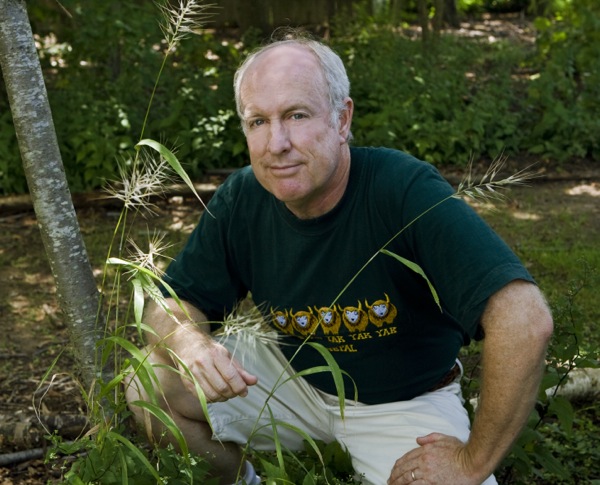Bringing nature home
UD expert lists top 10 landscaping plants for Mid-Atlantic
12:46 p.m., May 7, 2013--Armed with a shovel, Doug Tallamy, chair of the University of Delaware Department of Entomology and Wildlife Ecology, is leading a new American revolution, and he wants you to join him.
All you need to do is plant one native tree or shrub in your yard — perhaps an oak or willow tree, a blueberry or cranberry bush.
Research Stories
Chronic wounds
Prof. Heck's legacy
It isn’t hard to do, it doesn’t cost much and the paybacks, Tallamy says, will be immediate. Caterpillars will begin feeding on these native plants, and then birds will discover the caterpillars and start snapping them up. Add more native plants, and your rewards will be even greater, as a richer web of life springs forth.
In a study of randomly selected homes in suburban developments built from 1990-2005 in New Castle County, Del., and neighboring Chester County, Pa., Tallamy and his colleagues have found that 92 percent of the landscapable area around those homes is lawn, which is akin to a desert in terms of wildlife habitat. On the remaining 8 percent of landscapable area, 75 percent of the plant species are non-natives, and 79 percent of the total number of trees, shrubs and flowers are non-natives, offering very little in the way of food for insects (which do not recognize non-native plants as food) or for birds.
But homeowners can change that. Tallamy, the author of the award-winning book Bringing Nature Home, has identified the top 10 native plants for butterflies and moths in the Mid-Atlantic region. The number-one pick — the oak tree — supports 534 species of butterflies and moths (key food for birds and their nestlings), and the tree’s acorns feed deer, turkeys, bears, squirrels, even wood ducks.
Other top choices range from willow, birch, cherry and plum trees to crabapple and pine trees, blueberry and cranberry bushes. For more of Tallamy’s top selections, download this handy PDF with photos.
“When plants bring life into your yard, it’s instant gratification,” Tallamy says. “It’s especially critical for kids to understand the linkages. By putting native plants in your yard, you can make those connections for the future stewards of our planet.”
For the full story, see this recent article in the University of Delaware Research magazine.
Article by Tracey Bryant
Photo by Ambre Alexander











